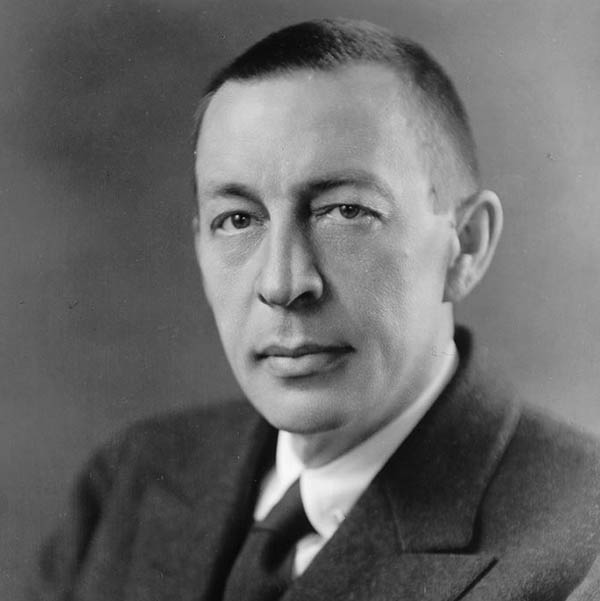
Symphony No. 2 in E minor, Op. 27
Sergei Rachmaninoff (1873-1943)
[1907]
Sergei Rachmaninoff graduated from the piano program at the Moscow Conservatory with honors in 1891, and he capped his composition studies the next year by earning a rare “Great Gold Medal” and attracting his first publishing contract. An early Prelude in C-sharp minor became one of his most recognizable calling cards, and everything seemed aligned for Rachmaninoff to take his place as the leading young composer in Russia. Then disaster struck in 1897, when the botched premiere of his First Symphony was so traumatic that Rachmaninoff stopped composing for three years, and then only resumed after months of work with a hypnotherapist.
Rachmaninoff redeemed himself in 1901 with the acclaimed debut of the Second Piano Concerto, but he still hesitated to plunge into another symphony. It was only after he moved his family to Dresden in 1906 that he found enough relief and distance to start plotting his massive Second Symphony, which he completed in 1907 and conducted the following year in St. Petersburg. After an initially positive reception, it began to suffer from the innumerable cuts that conductors made (and which Rachmaninoff begrudgingly accepted) to trim it down from its unwieldy span of an hour or more. During Rachmaninoff’s heyday as a touring pianist, this symphony all but disappeared from the concert repertoire.
Those qualities of grandeur and emotionality that 20th-century tastemakers sometimes found off-putting in Rachmaninoff’s music now stand out as strengths, extending the Russian Romantic tradition he inherited from Tchaikovsky. Like Tchaikovsky’s Fifth and Sixth Symphonies, Rachmaninoff’s Second Symphony enters its slow introduction quietly, beginning with a bare theme from the cellos and basses and ending with a plaintive solo for English horn. The Allegro moderato body of the movement develops a violin melody related to the introduction’s opening theme, offset by contrasting material that colors the movement with a sentimental glow.
After such a weighty opening movement, the symphony proceeds directly to the invigorating scherzo. The main theme quotes the Dies irae (“Day of wrath”) plainchant that became an obsession for Rachmaninoff, appearing in more than a dozen works, from the tone poem Isle of the Dead (1909) to the Rhapsody on a Theme of Paganini (1934).
Not unlike Tchaikovsky, Rachmaninoff had a preternatural gift for crafting lyrical melodies that just beg to be hummed or sung. The main tune of the Adagio had a particularly rich afterlife when it became the basis of the pop star Eric Carmen’s 1976 hit “Never Gonna Fall in Love Again.”
Again copying the template from Tchaikovsky’s Fifth and Sixth Symphonies (and before those, Beethoven’s Fifth Symphony), the finale transports the home key from E-minor to E-major. Echoes of earlier movements seal the work’s interconnectedness, and a classic Rachmaninoff tune provides a passionate capstone for this lush, nostalgic symphony.
Piccolo, three flutes, three oboes, English horn, two clarinets, bass clarinet, two bassoons, four horns, three trumpets, three trombones, tuba, timpani, percussion, strings
